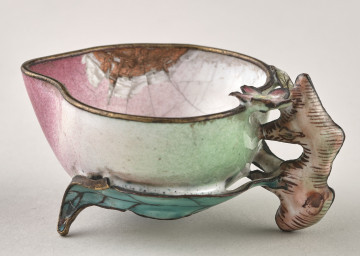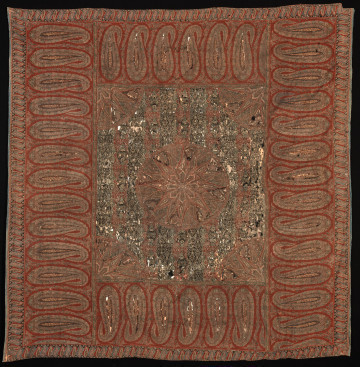
Bowl
18th-19th century
Castle Museum in Łańcut
Part of the collection: Orient
19th century censer in the form of an ibis, which stands on a small pedestal in the shape of a rock. The figure of the bird is characterised by a slender, long neck, head raised upwards, and a long beak. On the back of the bird is an opening for incense, covered with wings that can be opened or closed. A censer is a vessel for burning incense or solid perfume. These vessels varied considerably in size, form and construction material. They were typically used in both secular and sacral areas in many cultures since ancient times. They were used to cleanse the air of “pathogens” during an epidemic threat, perfuming spaces, and even measuring time during rituals and ceremonies – the rate of burning of conical incense was measured. Incense is burned by placing it directly on a source of heat or a hot metal plate in the censer. Small concave charcoal briquettes were sold for use with incense to be used at home. A corner of the briquette was lit, the briquette was placed in the censer, and the flame was extinguished. After the glowing embers encompassed the entire briquette, it was ready for incense to be placed on it.
Author / creator
Dimensions
height: 46 cm
Object type
Orient
Technique
carving, cast
Material
bronze
Creation time / dating
Creation / finding place
Owner
Castle Museum in Łańcut
Identification number
Location / status

18th-19th century
Castle Museum in Łańcut

18th-19th century
Castle Museum in Łańcut

18th-19th century
Castle Museum in Łańcut
DISCOVER this TOPIC
Museum of King Jan III's Palace at Wilanów
DISCOVER this PATH
Educational path